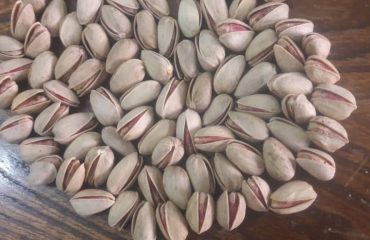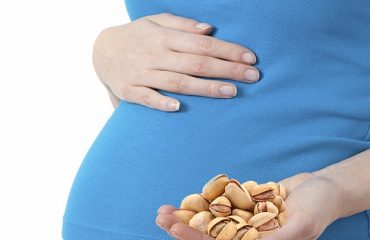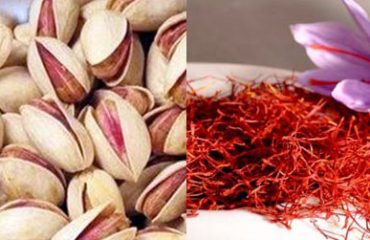First of all, I would like to emphasize my experience with my observations of my own gardens. In this regard, three points were more prominent for me:
What was very interesting for me this year is not the beginning of 1398, it is related to the effects of climate and irregularities created in 1396 and 1397, which caused pistachio trees to enter a very strong vegetative phase in 1397 and eliminate the crop; For this reason, in the following year, ie 1398, they entered the reproductive phase, but did not have a significant growth. This issue and the weakness of the crop led to the production of a healthy and permanent nest or less reproductive germ for the next year, and this means that in 1399 we will again have a severe crop decline.
In my opinion, the cold and heat stress that occurred in the spring of 1397 was one of the main causes of this current, as it was cold in the morning and at night and warmed at noon. This caused an unusual amount of seeds to fall from the clusters of our pistachio trees. The previous years were fresher and greener, but without product. In addition, it was suspected that a number of reproductive buds (gar) had turned into vegetative ones (twigs or twigs).
We have been harvesting our produce for about 25 years and that is why the gardens have been cleared every year; In other words, because we call it Chinese, the percentage of crop decline or annualization has decreased over the years.
In Kal-e-China, crop yields are reduced, and in orchards that carry out their work according to a specific procedure, that is, irrigation, tillage, soil remediation, pest control, and regular fertilization, in other words, according to a fixed procedure in Gardens are spent and gardens are not abandoned in times of economic pressure, and fruiting finds a definite routine.
The difference between our high-pistachio year and the low-pistachio year was 18.5 percent in many areas, whereas if we picked ripe pistachios, the yield of the unprofitable year would have to be much higher than that of the year.
Pistachio when released from the tree causes the tree to be released sooner; Like a pregnant mother who is weak and the baby is born earlier and put in the machine so that both the mother and the baby stay healthy! When we are in a water crisis in Kerman and the water cycle is long and the trees are watered once every 60 days in the summer, since we started picking, it means that we got that fruit earlier than the tree, to the tree less. The pressure has come and the tree has a better chance of renovation. So, every year we had a definite decline in productivity and our annualization was clear. The spring of 1397 disrupted my work order! There were orchards in our area that picked up only one pistachio pickup per day from a six-pound pump, or just the size of a Peykan trunk! The same six-pound pump that one day a few Benz truck services went to the garden and came out full.
Climate change has disrupted the order of the gardens. Under these conditions, the loss of orchards increases and it takes time for the orchards to return to normal; That is, one year they strongly enter the growth phase and the next year they enter the reproductive phase. It has been the same before, but not with this sharp percentage difference.
The better the pistachio year, because the production of the unhealthy year or the low year of pistachios is very low, as a result, the average and average production has decreased over a period of several years. The intensity of the annualization has increased so much that it seems as if one year is one hundred and one year is close to zero, also considering these costs. I think it will take a few more years for the gardens to take their place again. Weather and climate assistance should be available in addition to work and care. That is to say, such farmers have one year of money, one year they have almost nothing, and one year of income has been lost.
If this is the case everywhere, our economic outlook must also change more rapidly; This is not something new I want to say, but it is no longer very serious and no joke; In my opinion, farmers with similar conditions, with all the costs and risks involved in pistachio production, should seriously consider creating new and parallel incomes and not put all their eggs in the pistachio horticulture basket.
In the same province, there are families as well as small communities and cities that have no significant income other than pistachios. What happens if pistachios are exposed to new risks every day? What is the pressure and what is the exorbitant social cost?
However, due to a combination of factors ranging from climate change to water scarcity and concerns over new, stricter laws, labor costs and problems, and the inefficiency of pesticides, all in all, the risk of pistachio production has increased compared to the past. And it is not unreasonable that the ancients rented the garden for five years, but this risk has become so great that I think it is less than five years.
2- The effect of sulfur on dry milk
In my opinion, sulfur had a great effect on psyllids or dry juice. I do not spray sulfur in solution. I bought a dry sulfur sprayer made in Turkey. First the turbofan moves forward and sprays the empty water and soaks the trees, and then immediately with the next tractor we spray the micronized dry sulfur on the soaked trees. I saw a good effect of sulfur with this method. In addition, the failure of the pumps was greatly reduced due to the removal of sulfur from the water as well as the expenditure of power, and it seems that the sublimation effect of using sulfur separately from the water was even longer.
3- Growing the importance of hazelnut pistachio
Another thing is that something interesting happened in the pistachio market this year; The percentage of hazelnut price decline was lower than Akbari. I myself tried to take the gardens to the junction of Ahmad Aghaei and Akbari.
This year, out of the previous routine, I picked the Akbaris and saw that their skin became so-called crow’s and that did not give us that beautiful white skin.
With that in mind the issue of price, as well as the issues of climate change and some of the benefits of hazelnut cultivation in these circumstances, I think we should emphasize the change of variety from hazelnut to other cultivars, given the financial and time-consuming costs. I will reconsider.
The work of the ancients has never been foolish, and they must have had reasons and experiences to have invested so much in Fandoghi pistachios.
1- Irrigation
Irrigation is the most important operation during the season. Each stage of growth has its own sensitivity to providing sufficient water for various reasons. The most sensitive stages of pistachio tree growth to water stress are the time of flowering and nucleation. But some gardeners are afraid to irrigate their gardens at the time of flowering and say that irrigating them at this time will cause the flowers to fall. Trees are not able to absorb water in two ways; One is when the soil is dry (moisture is below PWP or the point of permanent wilting) and there is no water to absorb, and the second is when the soil is saturated with water and there is no water to absorb, so the plant suffers from suffocation and damage. Depending on the type of soil, this state of saturation persists for 24 hours in very light soils for up to 4, 5 days in heavy clay and alkaline soils after irrigation. In this case, the plant is under water stress. Therefore, in order to solve the problem in soils with low permeability at the time of flowering, heavy irrigation should be avoided. In conditions where the water and soil are saline, due to the high concentration of salt in the soil solution, water absorption is slowed down and the soil saturation may remain for a longer time. Osteoporosis, bone marrow smile, number of seeds per spike, fruit ripening, fruit weight and size depend on irrigation management during the season. Of course, other quality factors such as early smile and cracking of pistachio green skin are also affected by irrigation management; Prevention of drought stress in late spring, especially in June with adequate irrigation, has the greatest effect on reducing the formation of these pistachios and ultimately reducing the contamination of pistachio kernels with aflatoxin poison. Watering at the beginning of the season reduces leaf area, reduced vegetative growth and reduced seed size.
Note A: In Akbari cultivar, in some areas, irrigation should be stopped after the “millet” stage and no irrigation should be done until the bone crust has started to form.
Note B: Heavy irrigation in clay and alkaline soils in spring when the air is cool and high humidity causes the tree to turn yellow and some of the seeds of the cluster to die.
2- Farming
Any tillage, moving and adding soil, sand, gypsum, etc. should be done very carefully until the end of February and one to two times of heavy irrigation to wash away possible salinity and get out of root reach. .
The worst time for tillage in saline soils is March and the time for pistachio trees to germinate; Because the plant is very sensitive when it grows green and the least problem (salinity stress) can eliminate it. Doing any tillage creates air spaces in the soil, so this operation should be avoided during periods of frost (spring frost).
Air is a weak conductor of heat and has a low specific heat. Therefore, soils with larger and larger spaces transfer or store less heat. If the soil has been plowed in March, such as plowing or threshing, it should help to transfer and store heat through compaction and irrigation before the trees sprout and flourish, thereby improving the problem of frost; In addition, the removal of cover crops and weeds also helps to store heat in the soil.
3- Management of pistachio pests and diseases
In April, to control pests such as pistachio wood-eating butterfly, fruit-eating butterfly, pistachio fruit-eating butterfly (crash), pistachio ages and buds, weevil, wolverine and trunk weevil, chains (wet juice) should be planned. Infected trees can be identified and treatments applied to combat gum disease. In order to reduce the infection of Aspergillus and Alternaria fungi, humidity (irrigation) and garden hygiene should be observed. In May, pests such as common pistachio psyllids (dried sap), chanterelles, pistachio ages and shoots, solitary bedbugs, beetles, bee-eaters, crustaceans, heliotis, and leaf-eating butterflies must fight pistachios. . In this month, specific trees and desired treatments can be applied to combat gum. In June, pests such as psyllids, annuals, fruit-eating butterflies, heliotis and pistachio-eating butterflies should be controlled based on population.




